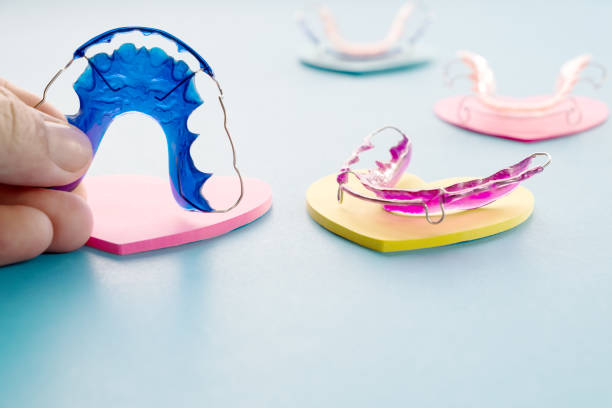Patients who have had dental treatments like braces often use plastic retainers to keep their teeth in the right place. Although they are very important for keeping your beautiful smile, it's important to know about the possible side effects that can come with using them. There is a lot more information about these side effects, including why they happen and how to lessen their effects.
Typical Problems With Plastic Retainers
1. Mouth Soreness: The gums, inner cheeks, and mouth can get irritated by new retainers. When your mouth gets used to the retainer, this irritation normally goes away, but if it doesn't, you should tell your orthodontist.
2. Allergic Reactions: Others might be allergic to the plastic retainers' materials, like acrylic or certain chemicals. Signs may include heat, swelling, and a burning feeling in the mouth.
Consult your orthodontist about other materials if you think you might have an allergic response.
3. Soreness and Discomfort: Pain and stiffness in the teeth and jaw are normal when you first start wearing a retainer. A soft diet and over-the-counter painkillers can help ease this initial soreness.
4. Bad Breath: Retainers can hold bacteria that cause bad breath and an unpleasant taste. Using the right methods to
clean your retainer regularly can stop this problem and keep your teeth healthy.
5. Difficulty Speaking: Getting used to talking with a retainer can be hard, which could cause mild lisps or brief speech problems. You can help your mouth adjust faster by practising talking while wearing the retainer.
6. Extra Saliva Production: Early on, wearing a retainer may make you salivate more as your mouth gets used to it. This effect normally goes away after a few days.
7. Darkening and Smell: Unkept plastic braces can get stained and smelly over time. Avoiding eating and drinking things that stain and cleaning your retainer regularly can help it stay fresh.
8. Retainer Damage: Chewing or biting down hard on the retainer can break or crack it. Additionally, this makes the retainer useless and may also harm the mouth. After eating, take out your retainer and be careful with it.
What causes these side effects?
Due to the sensitive nature of oral health, any new device needs some time to get used to. Retainers are usually safe, but they can still irritate or cause allergic reactions in some people. Keeping retainers clean is also very important, as they can quickly become a breeding ground for germs if not done properly.
Lessening the unwanted effects
1. Appropriate Fitting: Make sure that a skilled orthodontist fits your retainer correctly. A properly fit retainer reduces inflammation and pain.
2. Cleaning regularly: Utilise the right cleaning products and follow your orthodontist's instructions to clean your retainer every day. This keeps germs from building up, bad breath from happening, and stains from showing up.
3. Adjustments Made Gradually: Be patient as you get used to the retainer. Gradual contact, like wearing it for a few hours a day, can help make the adjustment easier.
4. Seek advice from your orthodontist: Immediately see your orthodontist if you are in constant pain or irritation or think you might be having an allergic response. For example, they can change the size or suggest different materials.
Final Words
Maintaining the alignment of your teeth after orthodontic treatment is important, but it's also important to know about the possible side effects of plastic braces. You can make sure that your experience with retainers is as easy and useful as possible by learning about these side effects and taking steps to relieve them. Don't forget that going to your orthodontist's appointments regularly and following their care instructions will help you get the best results and safeguard your smile.
Source: iStockphoto
